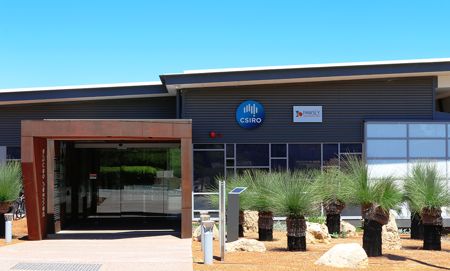Australian Pawsey Supercomputing Centre Selects HPE for $48 AUD Million Contract
Integrating Cray ClusterStor E1000 system
This is a Press Release edited by StorageNewsletter.com on October 30, 2020 at 2:06 pmHewlett Packard Enterprise was awarded a $48 AUD million contract to build a HPC for Pawsey Supercomputing Centre, an Australian national HPC center located in Western Australia.

The new HPC is part of the Pawsey Capital Refresh Program, which is a $70 AUD million program funded by the Australian government to invest in next-gen supercomputing to advance the nation’s research.
Pawsey’s system will be Australia’s most powerful HPC with 30X more compute power and 10x more energy efficiency1 to target complex modeling and simulation for accelerating research in areas such as astronomy, plant pathology, and drug discovery.
HPE will build the new system using its Cray EX HPC to support higher performance, density, and efficiency needs. It will also integrate the Cray ClusterStor E1000 system, which utilizes tailored software and hardware features to meet expanded storage needs, and feature a future-gen of AMD EPYC CPUs and AMD Instinct GPUs for compute power and targeted processors for AI and image-driven applications.
“HPCs like those at Pawsey are increasingly crucial to our ability to conduct world-class, high-impact research. The upgrades we’re announcing are a critical move in strengthening Australia’s position in the global research environment and playing a part in major global research projects, from helping in the fight vs. Covid-19 to working with the precursor telescopes to the Square Kilometer Array,” said Mark Stickells, executive director, Pawsey Supercomputing Centre. “The new HPC built by HPE will not only deliver next gen compute power to meet these growing requirements, it will enable entirely new research projects with global reach and impact.“
Accelerating Scientific Discovery at Pawsey Supercomputing Centre
HPE, Cray and SGI, well before the companies merged with HPE, have had a 20 year-long history in powering Pawsey’s HPCs. More than 1,600 researchers use these systems to accelerate discovery and innovation.
Recent outcomes from Pawsey’s HPCs include:
- Understanding grape vine viruses to preserve crop production: Pawsey’s HPCs have been used to study grapevine leaf-roll viruses (GLRV) which infect grape vines and impact up to 70% of production across Australia. Scientists sped up the assembling, mapping and analysis from GLRV genome data which has helped vineyard owners identify and remove infected vines before the virus spreads.
- Using AI to teach underwater robots to swim like fish: Underwater robotics are used in environmental monitoring, resource exploration, search and rescue efforts and more. To further improve navigation for underwater robots and enable them to be autonomous, scientists are teaching them to swim like fish. Computational fluid dynamics models were developed and leveraged on Pawsey’s HPCs to simulate fish swimming styles, including how they increase speed and change direction, and applied these capabilities in ML algorithms to train neural networks on underwater robotics.
- Solving mysteries of the universe: In an ongoing quest to uncover unknown parts of the universe, scientists used improved sky-mapping techniques to detect seven new galaxies which have been further studied using complex modeling and simulation as a step to understanding dark matter and the universe’s overall physical processes. Researchers also use this knowledge to improve technologies used on earth, such as scanners and communications networks.
“Scientific breakthroughs made by world leading research centers, such as Pawsey HPC Centre, inspire us to continue empowering the community with powerful supercomputing solutions that combat the broadest range of challenges,” said Nick Gorga, GM, HPC and AI, APAC-India, HPE. “We look forward to collaborating with AMD to build Pawsey the most powerful system for the region and boost Australia’s research capabilities to advance missions from understanding human viruses to discovering new galaxies.“
The new system will have a speed performance of 50 petaflops, making it one of the largest HPCs in the region.2 It will replace Pawsey’s Magnus and Galaxy systems, which are based on Cray technology.
“AMD is excited to help accelerate groundbreaking scientific research with our high-performance processors in the next-gen HPE and Pawsey HPC,” said Forrest Norrod, SVP and GM, AMD data center and embedded systems group. “Significant new discoveries will be made at the Centre for years to come, enabled by Pawsey’s almost 50 petaflops of supercomputing capacity.“
More about HPE’s supercomputing solutions
1 30x more compute and 10x energy efficiency compared to Pawsey’s Magnus system and calculated by Pawsey Supercomputing Centre
2 Speed performance of 50 petaflops attributed to overall system performance advancements compared to Pawsey’s Magnus system










 Subscribe to our free daily newsletter
Subscribe to our free daily newsletter


